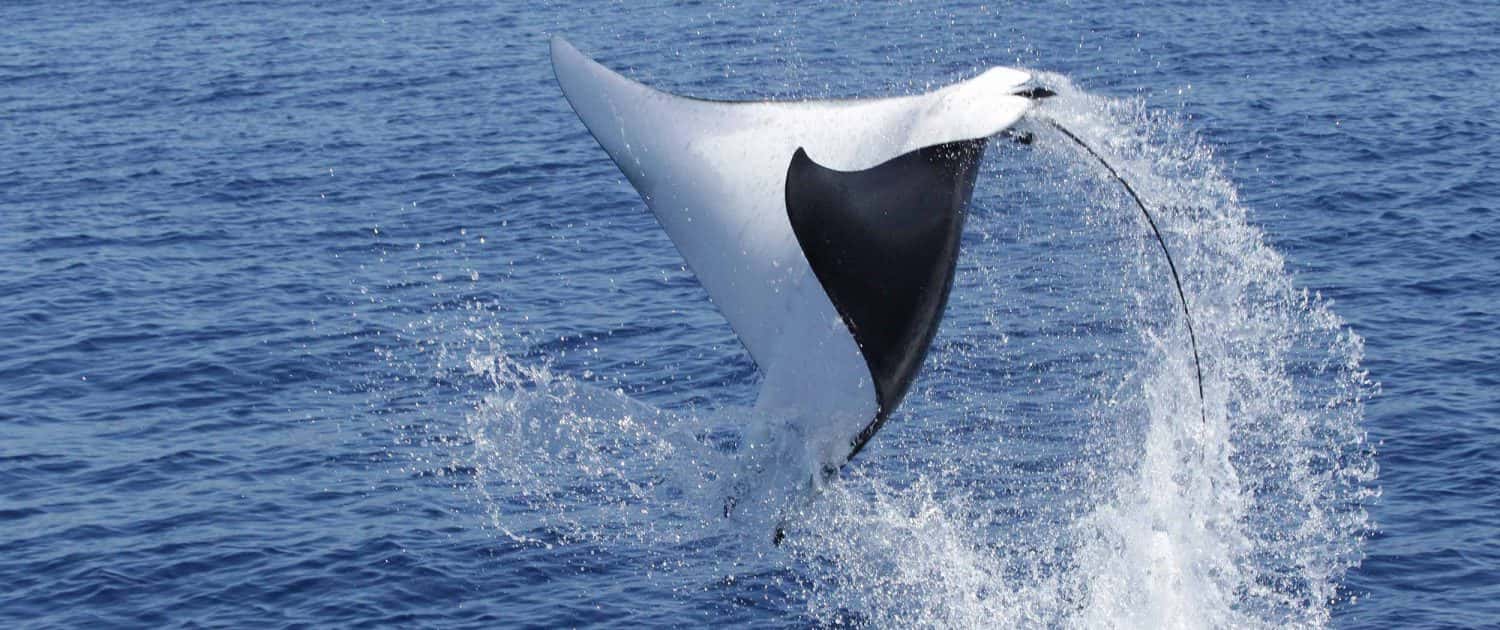Devil rays (batoid species belonging to the family Mobulidae) are highly evolved elasmobranchs that have abandoned life on the sea bottom to swim in the water column and near the surface, where they feed on small fishes and zooplankton. Some (e.g., manta rays) have reached a very large body size.
Devil ray science
Following the taxonomic revision of the genus Mobula (1987), which comprised the description of a new species (Munk’s devilray, Mobula munkiana, named in honour of the famed oceanographer Walter Munk), work has concentrated on collaborations with other world leading experts under the auspices of IUCN’s Shark Specialist Group, to support the conservation of these extremely vulnerable fishes. This included:
- supporting with scientific information the listing of mobulid rays in the Appendices of CITES and of the Convention on Migratory Species,
- liaising with the Manta Trust, an NGO dedicated to mobulid science and conservation, and actively participating to the drafting of a Global Strategy for the Conservation of Mobulid Rays (work in progress).
Giant devil rays in the Mediterranean
The giant devil ray, Mobula mobular (Bonnaterre, 1788) is the only mobulid found in the Mediterranean, and probably endemic to the region. Considering the extremely low reproductive potential of the species, its limited range, and threats deriving from both directed and accidental captures in fisheries, giant devil rays were assessed as Endangered in IUCN’s Red List or Threatened Species.
A study was performed of giant devil rays’ habitat selection, abundance and seasonality based on aerial survey data collected in the north-western Mediterranean between 2009 and 2014, revealing for the first time an order of magnitude of their numbers in the study area, and providing insight into their migratory behaviour (Notarbartolo et al. 2015).
Furthermore, following the discovery of a significant direct fishery for giant devil rays seasonally gathering off Gaza (Palestinian Territories) in late winter, a collaborative work was started in 2015 with Professor Mohammed Abudaya, an ichthyologists from the local university with the support of the MAVA Foundation, to study the phenomenon, suggest mechanisms for impact mitigation on this endangered species, and satellite tag some individual rays to study their migratory behaviour within the Mediterranean.
Devil rays from the Arabian seas
The seas surrounding the Arabian peninsula, including the Red Sea, the Gulf of Aden, the Gulf of Oman and the Arabian/Persian Gulf, contain very important habitat for these fascinating and vulnerable species, and a better understanding of their ecology and status is urgently needed to secure their survival. A description of the biology, ecology and conservation status of devil rays found in the seas of Arabia is ongoing. This also includes the re-description of a little-known species, Mobula kuhlii.
Literature
Notarbartolo di Sciara G., Lauriano G., Pierantonio N., Cañadas A., Donovan G., Panigada S. 2015. The devil we don’t know: investigating habitat and abundance of endangered giant devil rays in the North-Western Mediterranean Sea. PLOS ONE 10(11): e0141189. doi:10.1371/journal.pone.0141189 Open access


